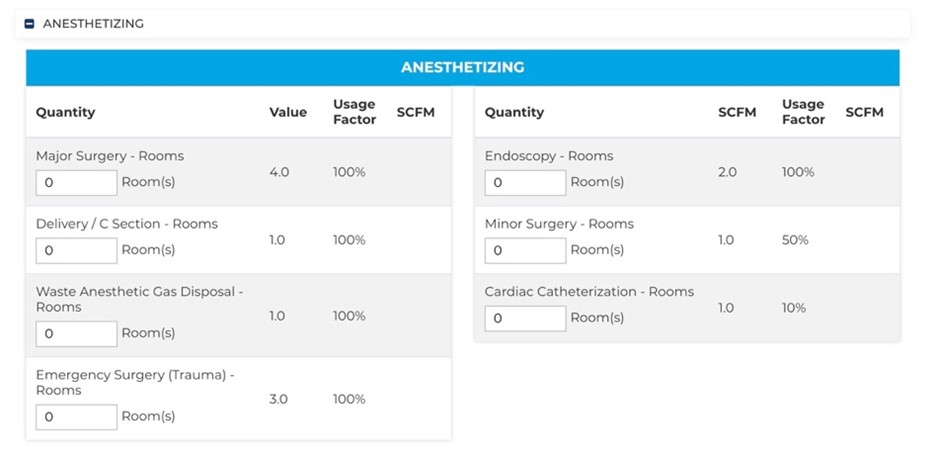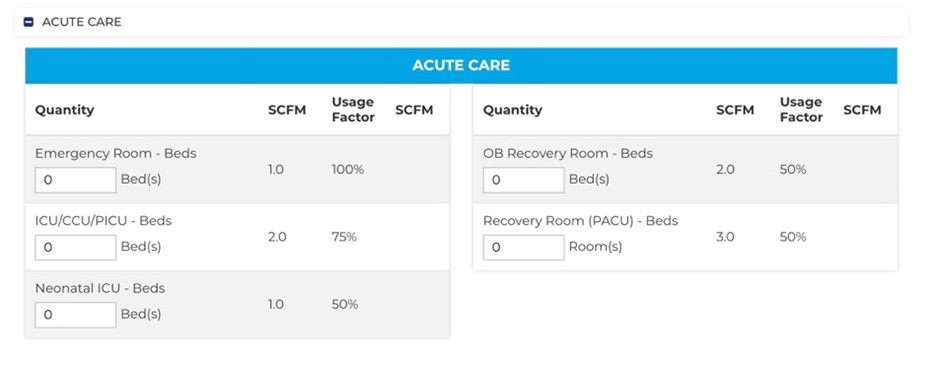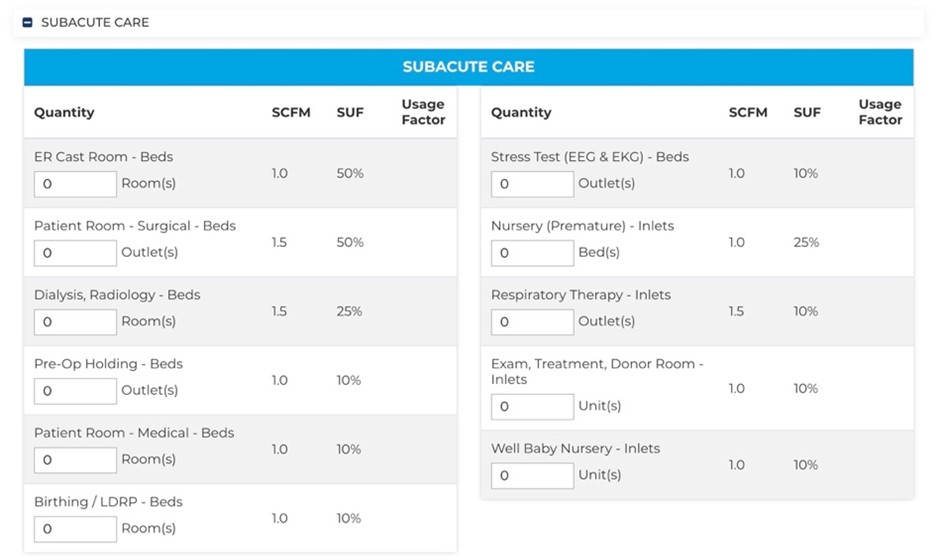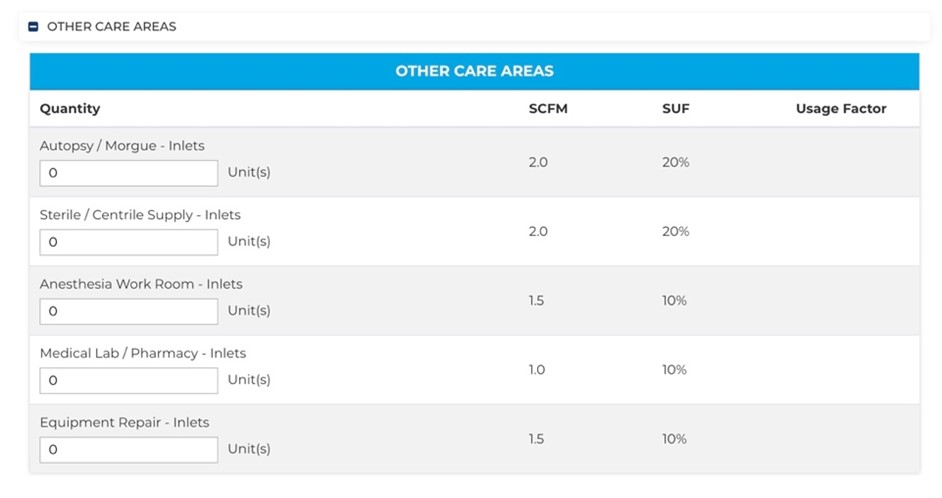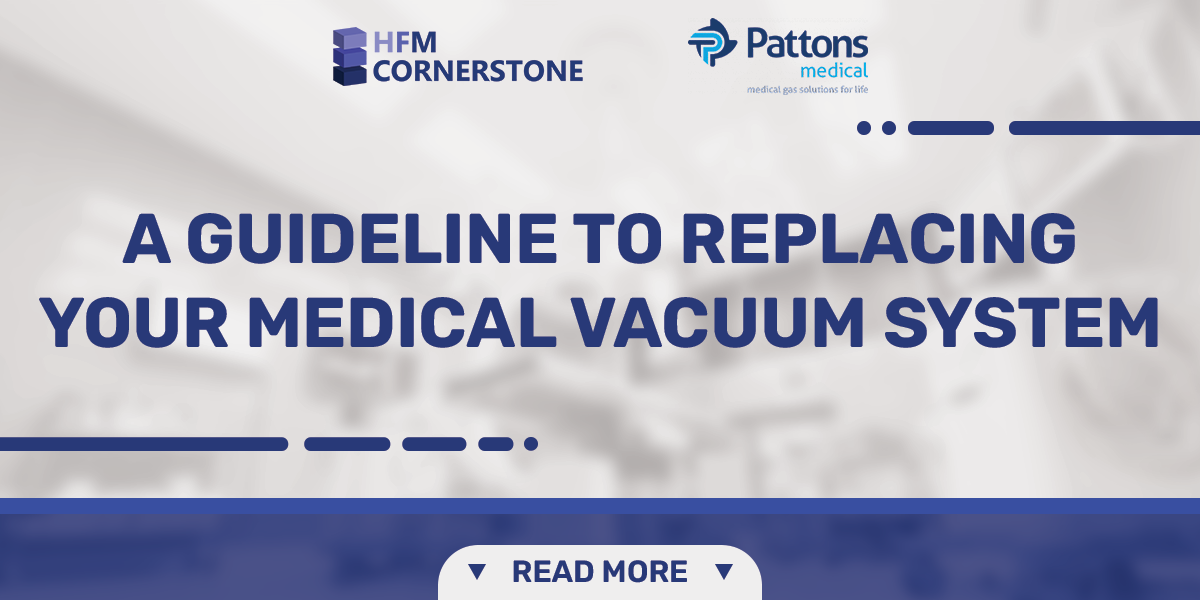Are you looking to replace your medical vacuum system and would like to know how to determine the size of your next system? Gather the below three data points, and we will walk through how to size your next vacuum system, to meet your facilities current and future needs.
Here’s what you need to size your next medical vacuum system:
- Number of rooms with vacuum outlets, by room type.
- Forecasted growth or planned repurposing of patient care areas.
- Your address.
Number of rooms with vacuum outlets, by room type
The best source for this information is your annual medical gas system survey. NFPA 99 2012 Edition, Section 5.1.14.4.4 requires an annual inspection of medical air and vacuum systems.
5.1.14.4.4 Central supply systems for nonflammable medical gases shall conform to the following:
(1) They shall be inspected annually.
(2) They shall be maintained by a qualified representative of the equipment owner.
(3) A record of the annual inspection shall be available for review by the authority having jurisdiction.
If you can’t find your annual system survey, I recommend you walk the facility and document room types. I’ve included a list of room types in this article (see below) and/or you can reference https://www.pattonsmedical.com/vacuum-calculator/. When asked “Do you know your SCFM requirements”, answer “No” and you will get the list of room types.
Forecasted growth or planned repurposing of patient care areas
Using the same calculator referenced above, calculate the increase or decrease in vacuum demand, forecasted over the next 5-10 years. If an increase is planned, I recommend purchasing an “expandable system”, which are manufactured from the control panel to the vacuum pumps to accept additional vacuum pumps.
If you are forecasting a decrease in demand, I would consider a vacuum system that meets the current SCFM requirements but using smaller pumps. For example, if your current demand is 150 SCFM, instead of purchasing a 25 HP duplex rotary vane system, consider a 6.5 HP quad rotary claw system with VFD. The later system is able to ramp down to meet diminishing need, resulting in a reduction of energy use and a prolonging of the system lifecycle.
Why your address?
At higher altitudes the air is less dense, which results in less vacuum for the same system at sea-level. Using the below Altitude Correction Chart you can calculate the adjusted SCFM required for your altitude. I use https://whatismyelevation.com/ to determine installation site elevation.
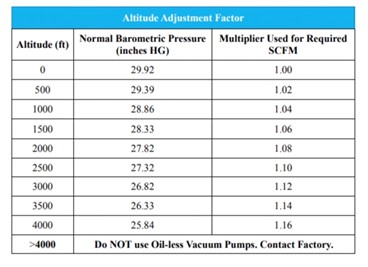
Using the 150 SCFM requirement referenced above, if the vacuum is going to be located at an altitude 3000 ft the calculation is: 150 x 1.11 = 166.5 SCFM
So, we’ve walked through the steps to size your next medical vacuum system. I hope this article has been helpful. If you have additional questions, feel free to reach out to me or your plumbing engineer for further support.
Appendix: Room Types
